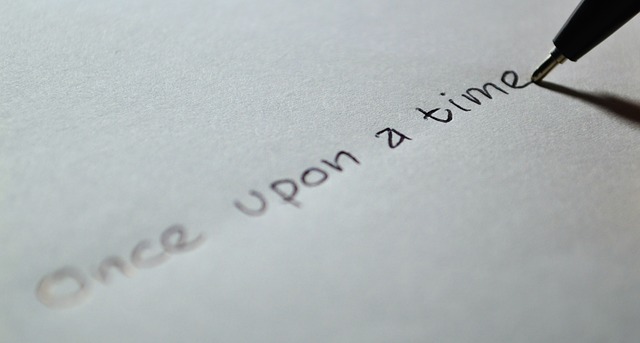As many of Script Advice Writer’s Room members on Facebook and followers of my Twitter feed may know, I delivered a session on Treatment Writing for Television at the London Screewriter’s Festival in October. It was fabulous to see so many enthusiastic faces in the packed out Tuke Hall and to learn that my book sold out as a consequence of the session.
I wanted to make available, for all writers; my condensed, no-frills Treatment Template which I believe is the quintessential DNA of a good treatment and will not fail you or your project, should you follow this layout and content.
So here it is:
TEMPLATE FOR TELEVISION TREATMENT – SCRIPT ADVICE scriptadvice.co.uk
by Yvonne Grace
TITLE:
Make yours really sell your idea by being the best you can make it.
My favourite titles? ‘Call The Midwife’. ‘Roger and Val Have Just Got In’. Sometimes it’s better that the title describes what’s in the tin, so to speak eg: ‘Good Cop’ or, to take an example of a show for CITV that I Produced; ‘My Dad’s A Boring Nerd’.
FORMAT DESCRIPTION:
These are the definitions that describe my working day and most of my television career in drama production.
Series: A drama that is open ended. A core cast of returning characters. The backdrop remains the same and is returned to each week. This is also called ‘the precinct’. There may be several stories per episode which are resolved, but the series storyline, that which is carried by the core returning cast, remains open. For example: ‘Waking The Dead’ ‘Coronation Street’ ‘Downton Abbey’ ‘Scott and Bailey’ ‘Skins’.
Serial: A drama of more than two parts with a strong serial element. A core cast of returning characters and an over arching storyline, but in this case the storyline is ultimately resolved. For example: ‘The Wrong Mans’ ‘Prey’ ‘My Big Fat Teenage Diary’ ‘Peaky Blinders’ ‘Poldark’.
Here in your treatment you state how long your series or serial is x 3/4/6/8 parts or is it a series of 13 or more parts?
LOGLINE:
In a small paragraph; a cluster of lines 3 – 6 maximum (otherwise it’s a pitch paragraph, not a logline!) summarise your idea as succinctly and entertainingly as you can. You need to convery the main narrative here – the set up, the jeopardy or challenge for your protagonist and to give a sense of style and tone by the way you word this. It’s hard to do but essential. This is what your Producer/Commissioner will keep refering to in your conversation about the drama and its future development.
ONE PARAGRAPH OF TASTY DESCRIPTION SETTING OUT THE WORLD:
Here the job is to be as descriptive and evocative as possible. Imagine you are telling your friend about a film you have just seen that truly made an impact on you. You need to entice them into the storyline, to make them want to see it too.
Use your visual brain and set out some key moments – they need not be the first ones seen in the first scene of your pilot – but they could be ‘set pieces’ or signifcant moments in your story for your main character. Visualise and describe for us what is going on. Draw us in.
CHARACTER BIOGRAPHIES:
Make these as tasty as you can. I like to add a quotation relating to each character under their name; the sort of thing they are most likely to say or something that alludes to their particular storyline. For example; in a treatment I wrote, ostensibly about the Eternal Quest For Mr Right and entitled ‘A Man For All Seasons’ (I did not square this with the estate of Robert Bolt but, if it had been commissioned I would have had to do a rethink) I created a character called Plum. Her quotation was ‘Plum is looking for a man she can spar with; so far, she has only dated a man that shops there’. In each character biography, give a suggestion of the arc of their storyline across the number of episodes, or across the span of the script you are intending to write. Make these people live on the page.
EPISODE OUTLINES;
Be exact and succinct in your language; avoid ‘then she said, then he said’ (which is oxygen sucking for anyone to read). Give only the thrust of the A storyline (or the main story line) with the smaller B and C’s threading in between. The broad stroke is necessary here, not the minutae of detail.
The reason these are here in the treatment, is to prove to a prospective buyer/producer that your idea really does fill the slots you say you are aiming for. So if there are 3 parts or 8, a producer will be looking at whether there is enough story material to go the distance. Some producers may ask for more detail at this point, and you can then provide them with an episode break down (which is a step by step break down of the story as it unfolds in each episode) but here, in the treatment, you are setting out the long arcs – the broad strokes – you need to give an impression of plenty but avoid tedious details.
MAIN STORY ARCS:
Each character has a journey and here you outline what that is in story terms. Again, pithy evocative language is what we are looking for.
Every moment a character exists on screen is a moment weighted with both subtext and text. Get their story down here for your Commissioner/Producer to see in an easily accessible way.
THE CENTRAL MESSAGE:
This will most likely be alluded to in your logline, but here you can extrapolate a bit more and dig a bit deeper. What do you want your audience to come away thinking having spent time with your drama? What is it you are saying about the world and your characters? What is the macro message to be gleaned from diving, as we have done here, in your treatment, into the micro world of your drama?
Throughout the writing of your treatment you must also pay attention to the style and tone of your writing and as much as possible, evoke for your reader the flavour of what they will ultimately be seeing on screen.
TREATMENTS ARE THE ENCAPSULATION OF ALL OF YOUR BEST IDEAS.
THERE IS A FORMULA TO WRITING GOOD TREATMENTS.
ART AND ARTIFICE COMBINE IN THE WRITING OF REALLY GOOD TREATMENTS
Treatments vary in length – it depends on what your project really demands. But generally, rule of thumb, a treatment is no less than 4 pages and often more like 8. The key here is to get all the information down, as interestingly as possible, as economically as possible, with as much clarity as possible and not to over write.
You make each word, each sentence, each image, each page, count.
BE PITHY:
condensed and forcible, terse.
As much as possible and consistently throughout the writing of your treatment you need to be succinct, to the point, pithy not verbose.
No need to describe the environment as though you are writing a novel – in fact – this is totally frowned upon in screenwriting so here, in treatment writing, adopt the same economy of style.
Only the most pertinent information about your world, your characters, and your story line (at this stage of the project’s development) is necessary.
HOW TO APPROACH TREATMENT WRITING
Like a time strapped, impatient Journalist….
With a week to live…….
EXPLORE YOUR WORLD IN PROSE:
The only time I believe detailed description is necessary or welcome in Treatment Writing is when you are writing your descriptive paragraph; that part of the treatment where you want to set out the world as you see it; to draw a pen portrait of the environment you ‘see’, on the page.
BRING IN THE VISUAL:
The world of television is visual – so enjoy being visual and bring in to your treatment images that help aid and describe the world and the tone of the world, in which your characters live.
ENJOY THE ENGLISH LANGUAGE:
Try to be as expressive as you can in as few words as you can. That is the key. So you need to be eclectic and imaginative with your use of the English Language. A Thesaurus is a good tool here. Spread your vocab wings and enjoy yourself!
HONE THE TONE:
Tone is very important in treatment writing. Full English is clearly a light hearted with an edge character driven piece. But if I were writing a treatment for a Medical series, I would adopt a totally different tone in the writing. It would not be wry or heightened. The tone would have a cleaner, neater, harder edge. Less frilly. More to the point. Clincial. You need to be able to adopt different writing styles to portray your various worlds.
BUILD THE TREATMENT AROUND CHARACTER:
Make sure your characters are as interesting and rounded as you can make them on the page.
In a treatment, they carry the colour, the texture of the document. Commissioners will be looking very carefully at this part of your treatment. It is on the attraction/engagement of your characters that a further interest will be expressed. But you need to back up your character biographies with a suggestion of their story arc, so the Commissioner can already feel early on, that this idea will take them further than one episode.
So you need also to….
BUILD IT AROUND PLOT:
Here your main story arcs come into play. So I am now looking for you to give me a suggestion, in broad strokes only, of where your story lines will take us over the general arc of your series or serial.
When you write your episode outline in your treatment, do not go into too much detail. I am looking for flavour, for tone and for enough story lines for me to feel the idea has ‘legs’.
DON’T FORGET THE SUBTEXT.
In your character biographies, I am looking also for SUBTEXT as well as the suggested arc of their story line which is the TEXT. Subtext will drive your narrative so I need to see here, what it is that drives or motivates, what it is that pushes your characters through the narrative, over your various episodes.
If you need help writing Treatments and a profession eye; get in touch www.scriptadvice.co.uk
Happy Writing!


